With the largest number of UNESCO World Heritage Sites in the world, Italy is home to one of the most recognizable and historically significant landmarks. From the magnificent Colosseum to the time-defying Roman Forum and numerous natural sites, here is a list of Italian landmarks you should add to your bucket list.
Lots of Italian Landmarks are so famous that they became the most recognizable landmarks in Europe.
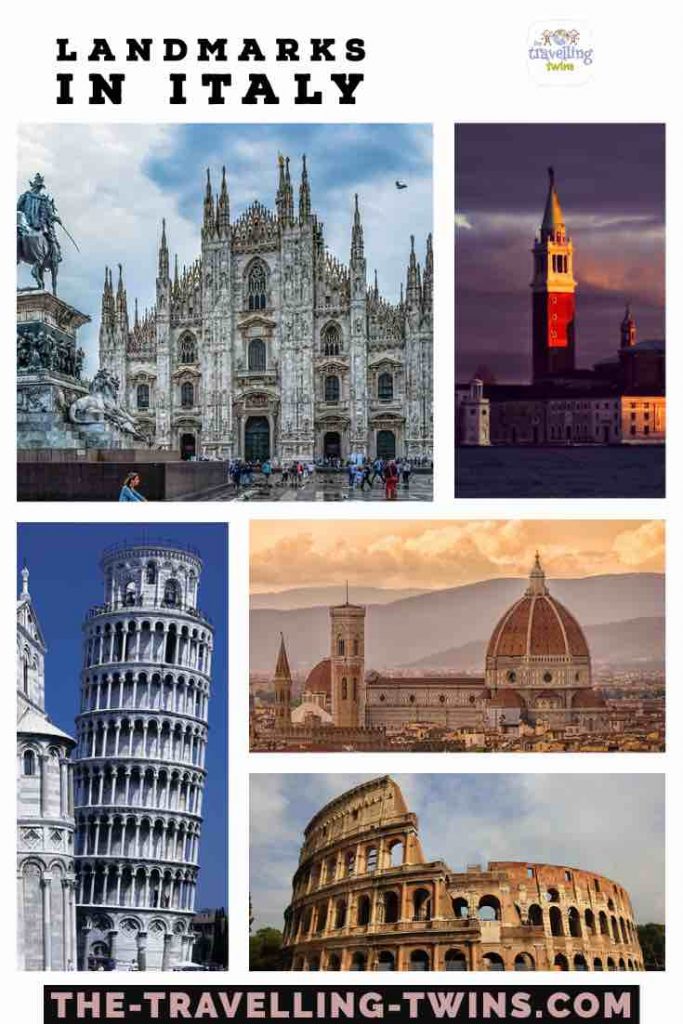
Rome Landmarks
Rome is the largest and one of the most charming cities in Europe with a fascinating history, many amazing landmarks, fountains and obelisk which all contribute to its beauty.
The Colosseum
Located right in the heart of Rome, the Colosseum was completed in 80 AD during the rule of Titus, though its construction began under the emperor Vespasian in 72 AD. Being probably one of the largest monuments at the time, the amphitheatre complex could accommodate around 80,000 spectators and was used mainly for gladiator battles, animal hunts, mock sea battles, reenactments of various ancient Rome battles, and many other public spectacles. The Colosseum was also one of the greatest testimony of how skillful Roman architects were, having designed to be waterproof in order to allow for the mock sea battles to take place.
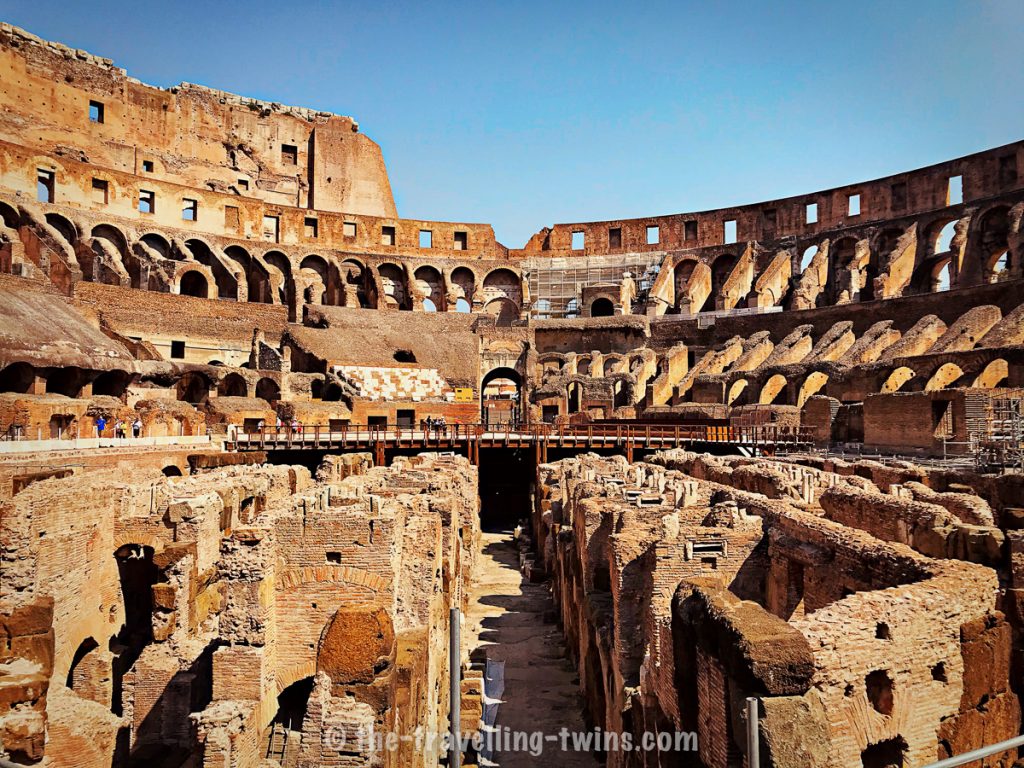
Roman Forum
As one of the enduring legacies of the ancient Roman Empire, the Roman Forum is a site located on the low ground between Capitoline and Palatine hills in Rome. It one of the most popular sights in Italy and used to be the scene of the various public meetings, gladiatorial combats, and law courts during the Roman Empire and was enclosed with shops and open-air markets. The site, along with many ancient landmarks in Italy, is usually frequented by scholars looking to unpack the history of Rome.
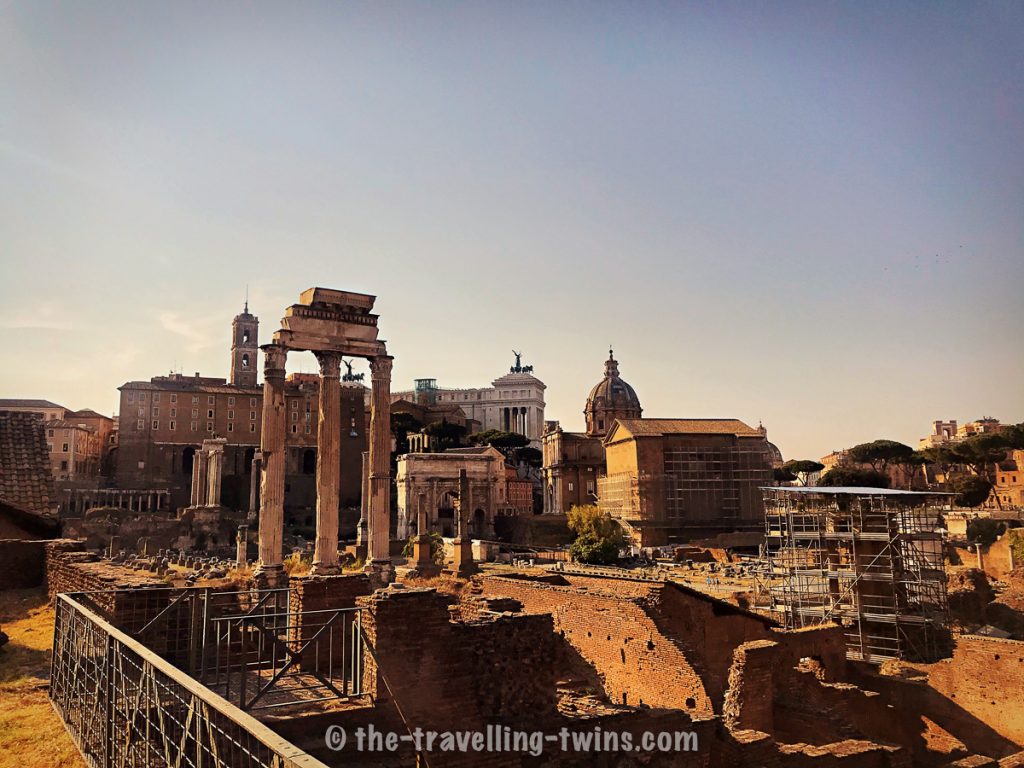
Sistine Chapel
Sistine Chapel is one of the top attractions in Italy, located in the Apostolic Palace in Vatican City. The main highlights of the church are its architecture and frescos. Although the church was already painted by other Renaissance painters, Pope Julius II still wanted Michelangelo to also have an input. He initially refused since he wanted to concentrate mainly on sculptures rather than painting.
The Pantheon
Located just 10 minutes from Trevi Fountain in the capital city, the Roman Pantheon is known for being one of the most preserved and important buildings of ancient Rome. It is one of the most visited Italy landmarks. The Pantheon was built by the emperor Hadrian to replace another Pantheon built by Commander Marcus Agrippa, which was burnt to the ground in 80 AD. It took around 5 years to build the Pantheon, with its dome also taking the same period to complete. The Eye of the Pantheon – an 8.2 meters wide hole on the dome lets the light into the Pantheon.
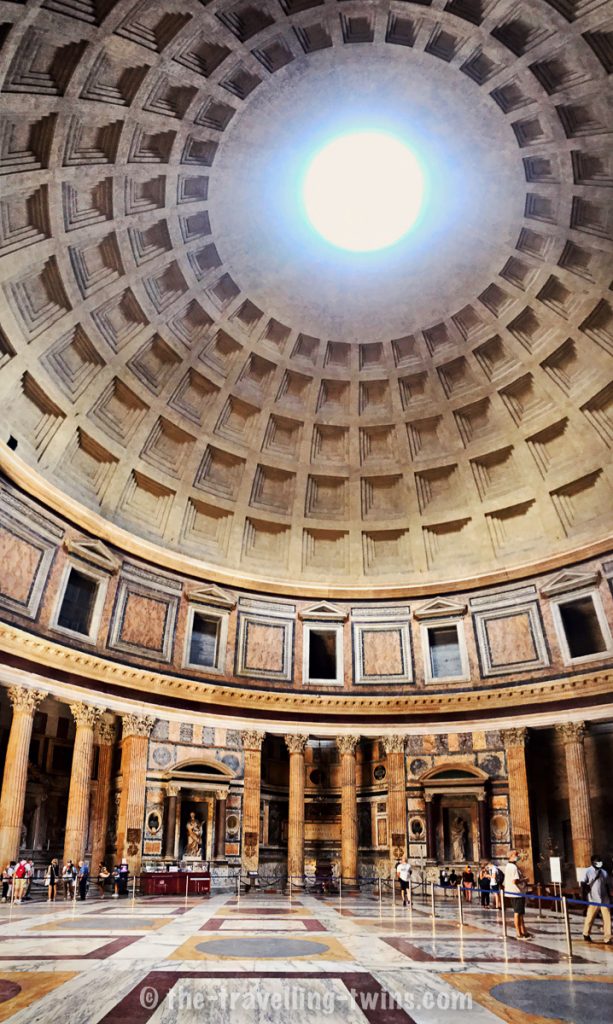
Trevi Fountain
Travelers from across the world congregate around Trevi Fountain, a few kilometers from the Pantheon, to toss coins into the fountain’s water. The Fountain is among the top tourist attractions in Rome as well as one of the oldest water fountains in the city. Trevi Fountain dates back to the era of ancient Rome. The center of the fountain is God Oceanus, accompanied by Tritons and sea-horses. Besides tossing coins in the water, visitors also come to admire its 18-Century Baroque architecture. Moreover, the fountain is located just 2 kilometers from Vatican City.
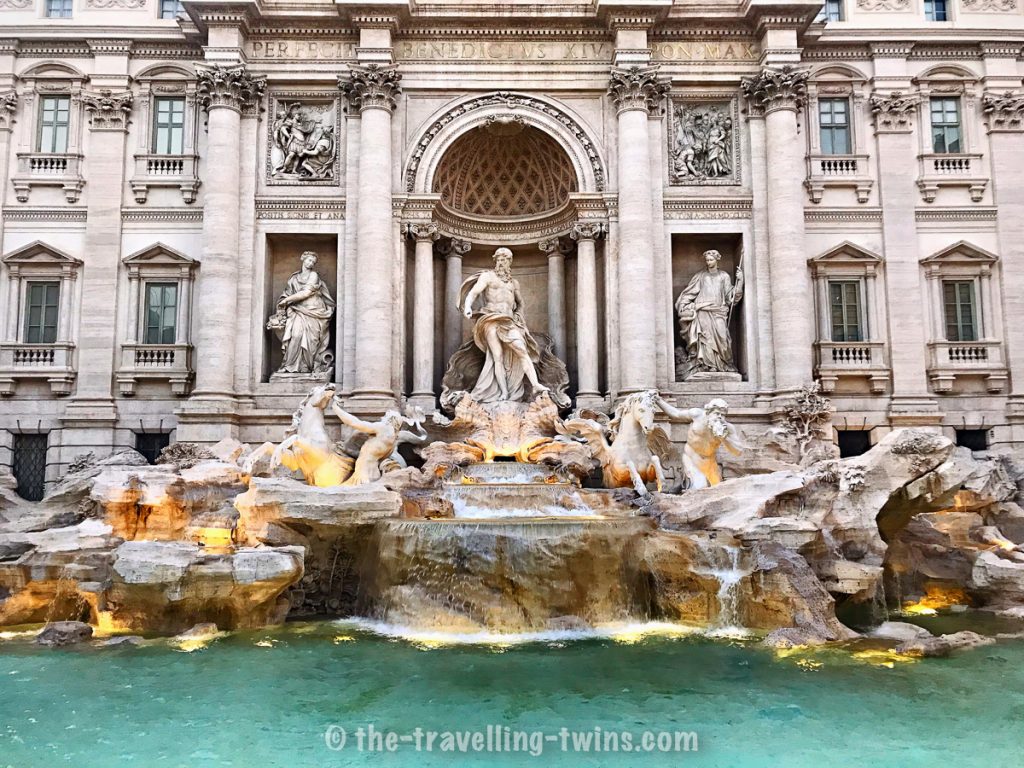
Throwing a coin to the Trevi Fountain over the left shoulder will guarantee that your wish come true.
Spanish Steps
The Spanish Steps were built by architects Francesco de Sanctis and Alessandro Specchi and was funded by French diplomat Etienne Gueffier, to link the Trinita Dei Monti church that was under the sponsorship of the Bourbon Spanish Embassy and Bourbon kings of France at the top of the steps, to Holy See in the Palazzo Monaldeschi at the bottom of the steps. There are 135 steps. The Spanish Steps are a few meters away from Spagna Metro Station and ten minutes walk from Trevi Fountain, and thus these two sights are easy to reach via Metro. The Villa Medici can be reached from the top of the stairway. The steps are also UNESCO world heritage sites.
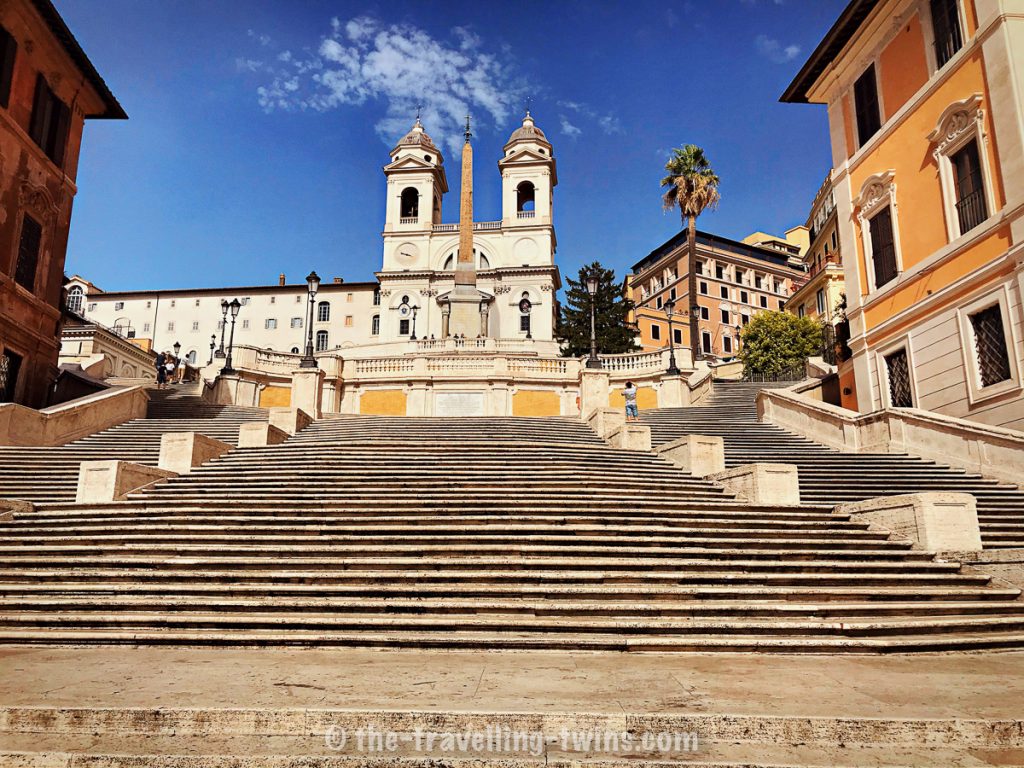
St. Peters Basilica
The construction of St. Peter’s Basilica begun during the rule of Pope Nicholas, who commissioned the design of the new church to replace the old one that had been neglected for many years. Numerous notable architects have had their hands on the basilica, including Michelangelo, Carlo Maderno, Gian Lorenzo Gernini, and Donato Bramante among others. Today the St. Peter’s Basilica serves as the papal enclave within Rome, inside the Vatican. The whole Vatican City is a UNESCO world heritage site. Vatican City is the smallest country in the world.
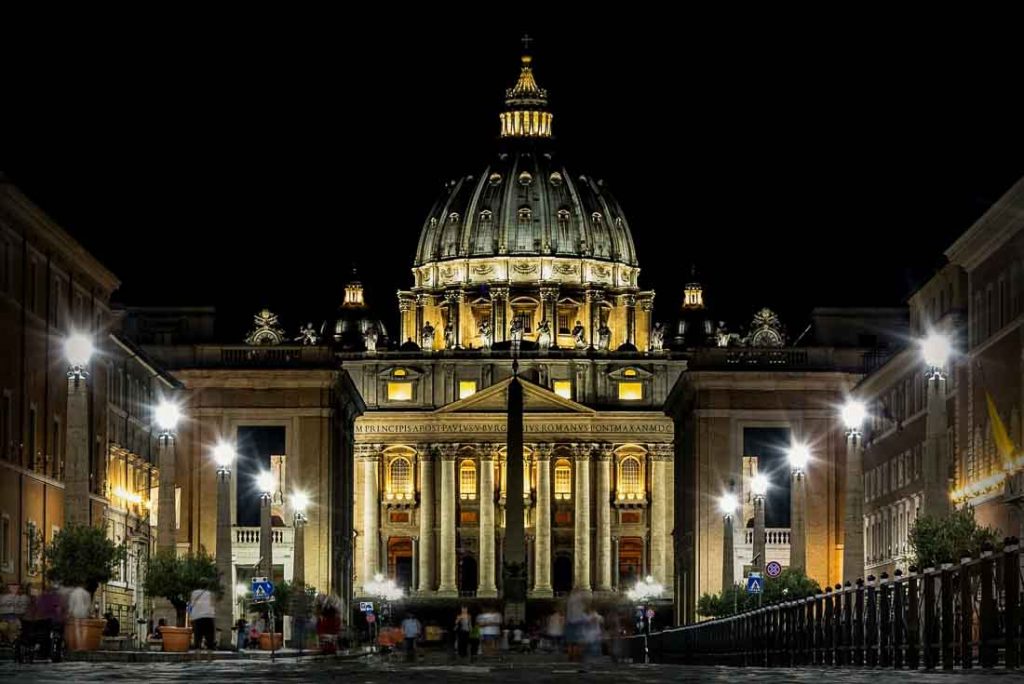
peter s basilica
Landmarks in Italy
Ponte Vecchio
The highly picturesque Ponte Vecchio spans the Arno River and is known for being the oldest bridge in Florence. The current bridge has been around since 1345, though it is believed that there was another bridge spanning the river before Ponte Vecchio. This bridge is a closed medieval stone structure that houses many jewellery and goldsmith shops and is one of the most photographed Italian landmarks. It was almost demolished by the Germans during the Second World War but was spared because the German soldiers retreated, though it is believed that Hitler ordered the bridge to be spared because he was marveled at its architecture.
Ponte Vecchio
St. Mark Campanile
St Mark’s Campanile is the bell tower of St. Mark’s Basilica in the city of Venice, Italy. At around 98 meters, this bell tower is the tallest structure in Venice and one of the most recognizable landmarks in the city. It is located near the mouth of the Grand Canal in Saint Mark’s Square and was used initially as a watchtower to protect the city from the sea, but it was also used to guide the Venetian ships into the harbor. Its construction started in the early tenth century and reached its full height in 1514 when a spire and a belfry were rebuilt. The spires and the belfry were designed in Renaissance architecture by Giorgio Spavento.
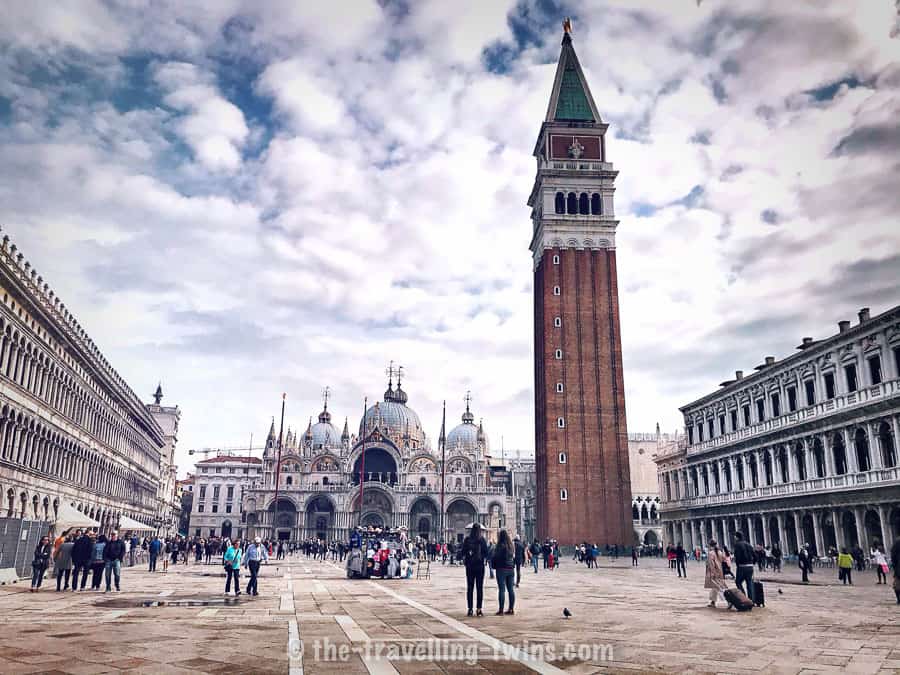
Piazza del Campo
Considered one of the greatest medieval squares in Italy and Europe, Piazza del Campo is the main public square in the city center of Siena in the Tuscany region. It is known for its beauty and architectural integrity. It has a circumference of 333 meters and is paved with a fishtail design of red brick divided by ten lines of white travertine stone, forming a shell-like shape with nine sections facing Palazzo Pubblico, the civic headquarters.
Leaning Tower of Pisa
A UNESCO world heritage site, the Leaning Tower of Pisa, or just the Tower of Pisa is a freestanding bell tower of the cathedral of Pisa, known for its four-degree tilt due to the unstable foundation. It is the third-oldest structure in the Cathedral Square (Piazza del Duomo), after the cathedral itself and the Pisa Baptistery. The tower stands at around 57 meters on the side and has a width of 2.44 meters at the base. It also has between 296 and 294 steps, leading up to the summit. Thus, climbing the tower is always on the bucket list of many travelers. From the top, you get extraordinary views of the city of Pisa below.
Field of Miracles
Cathedral of Santa Maria Del Fiore
Completed in 1434, the Cathedral of Santa Maria del Fiore is one of the most important landmarks in Florence and one of Italy many UNESCO world heritage sites. It is the fourth largest church on the planet, with its complex including Giotto’s Campanile and Baptistery, straddling the historic city center of Florence. The construction of the church’s dome marked the beginning of Renaissance architecture, and therefore, the cathedral is very important in Italian art and architecture. It was designed by Filippo Brunelleschi and Arnolfo di Cambio.
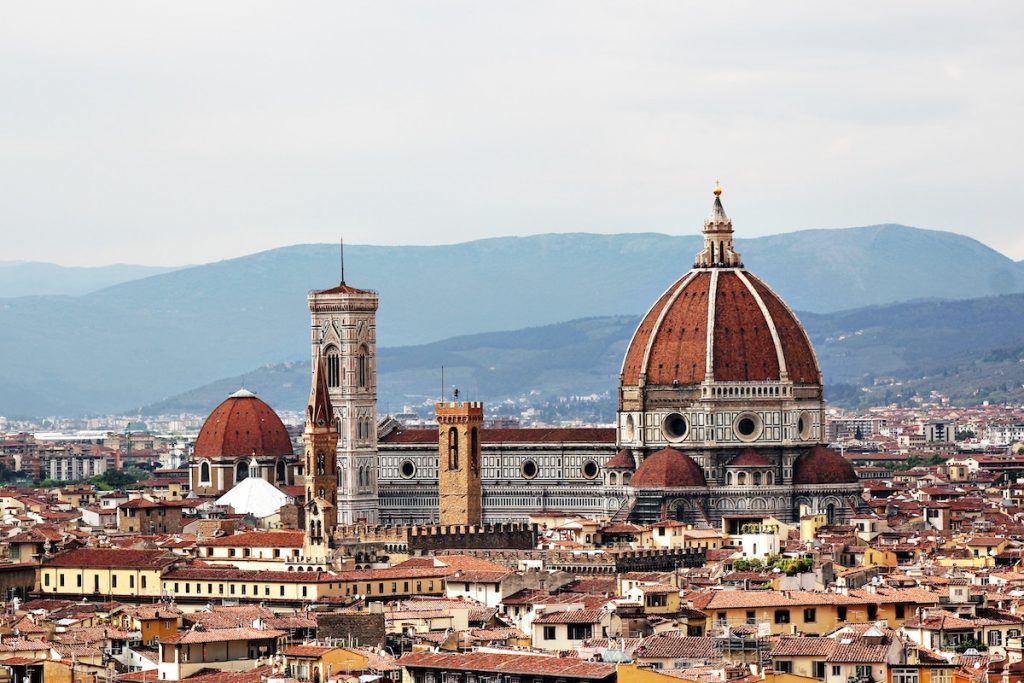
Uffizi Gallery
The Uffizi Gallery is renowned worldwide for its incredible collections of pre-historic paintings and sculptures from the Middle Ages to the Modern era. It is one of the oldest and most famous galleries in Italy and the world, housed in the Palazzo degli Uffizi, meaning the Palace of Offices, in the city of Florence, Italy. If you are an art lover, the first place that should on top of your list is the Uffizi Gallery, with one of its highlights being the famous work of Sandro Botticelli, Birth of Venus.
Giotto’s Campanile
Located next to the Basilica of Santa Maria del Fiore and the Baptistery of St. John, Giotto’s Campanile is part of the numerous buildings that comprise Florence Cathedral on the Piazza del Duomo in the city of Florence, Italy. The 85 meters tall tower is one of the attractions around here and a perfect example of Florentine Gothic architecture. It was designed by Giotto and features many sculptural decorations and some polychrome marble coatings.it has 414 steps that lead up the bell tower, and there are no elevators. It can take an average person around 45 minutes to climb the top of Giotto’s Campanile.
St Mark’s Basilica
The St. Mark’s Basilica is among Italy landmarks that should be on top of your list of things to do in Venice. It is the city’s most famous church and was at one point the chapel of the Doge, with its design and architecture displaying the wealth and power of Venice during the Roman reign. Entrance to the basilica is free though visitors can make a donation. You will also need to buy tickets if you want to see the Golden Altarpiece, San Marco Museum, and the Treasury. The church is one of the finest examples of Italo-Byzantine architecture.
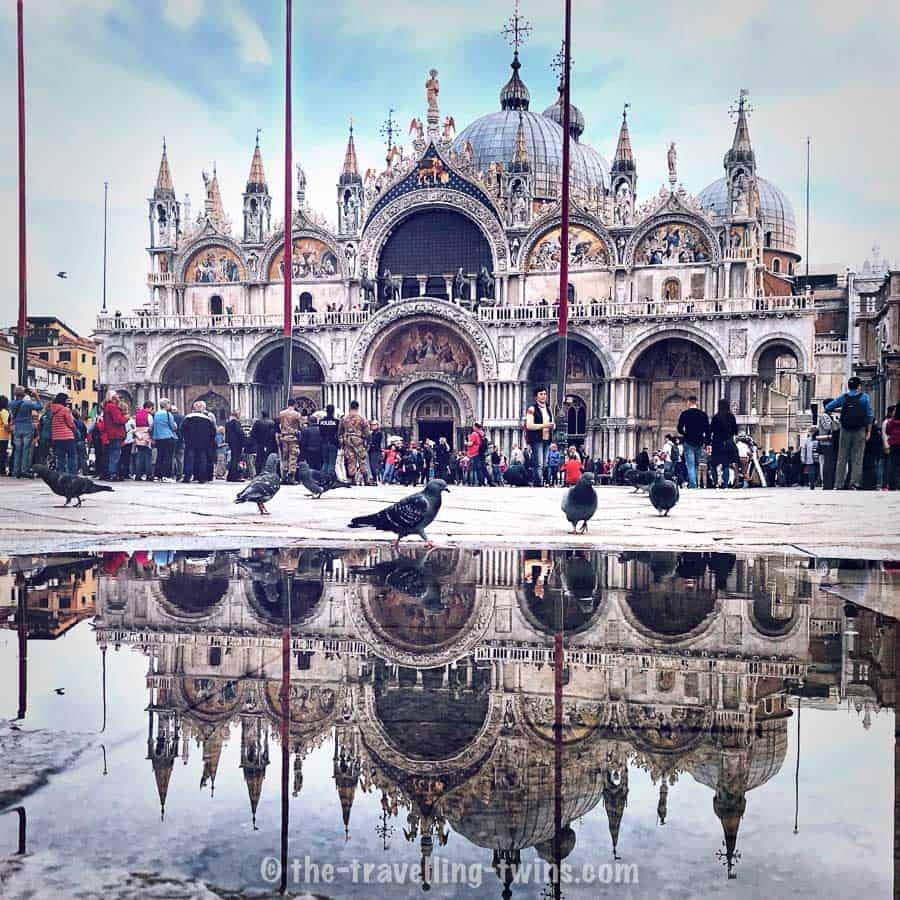
Arena di Verona
Completed in 30 AD the Verona Arena is a Roman amphitheater located in Piazza Bra in the city of Verona, Italy. Since when it was built in the first century, the amphitheater is still in use even today and is known internationally for its large-scale opera festival. The complex is one of the well-preserved ancient structures of its kind. During its heyday, the amphitheater would accommodate up to 30,000 people, but its capacity has been decreasing and today the arena has a maximum capacity of 15,000. It is booked for the closing ceremony for the 2026 Winter Olympics that will be hosted in Milan and Cortina d’Ampezzo, Italy.
Pompeii Ruins
Located near Naples, the Pompeii Ruins tell a story of one of the saddest tragedies in the history of an ancient civilization. If you find yourself with a spare day in Rome or Naples, this site should be on top of your bucket list. The House of Vettii is one of the highlights in Pompeii, representing the archetypal Roman architecture of ancient times. Though the villa was damaged during the infamous earthquake, it was renovated and adorned with water pouting statues. The Temple of Apollo is considered one of the oldest buildings in Pompeii and is an enduring testimony of the city’s long history. The temple is designed in Etruscan architecture and the statue of Apollo and the bust of Diana can be seen in the temple.
Duomo di Milano – Milan Cathedral
With its astounding architecture visible from far, the Milan Cathedral is the second-largest cathedral in Europe and fourth-largest in the world. Its construction was commissioned by Archbishop Antonio da Saluzzo and took centuries to complete, nearly six centuries, between 1386 and 1965. It is the largest church in Italy and one of the most striking landmark in Milan. Though St. Peter’s Basilica is larger than Duomo di Milano, it is located in the State of Vatican City, a sovereign nation.
Not far away from Cathedral Milan you can find the church of Santa Maria delle Grazie which is home to the famous painting of Last Supper by Leonardo Da Vinci
Basilica of the Sacro Monte Di Varallo
The Sacred Mountain of Varallo is a kind of mountainside Christian devotional complex overlooking the small town of Varallo Sesia in the region of Piedmont, Italy. It is known for being the oldest Sacro Monte, having been found in 1491 by Franciscan friar Bernardino Caimi. It is constructed on a natural terrace on the rock-strewn slopes of Monte Tre Croci, along the Sesia River. It is 150 meters tall, offering the views of Varallo historic center. The whole complex comprises the minor basilica and forty-five chapels, populated by over 800 large-scale painted statues that illustrate the life, passion, death, and resurrection of Christ.
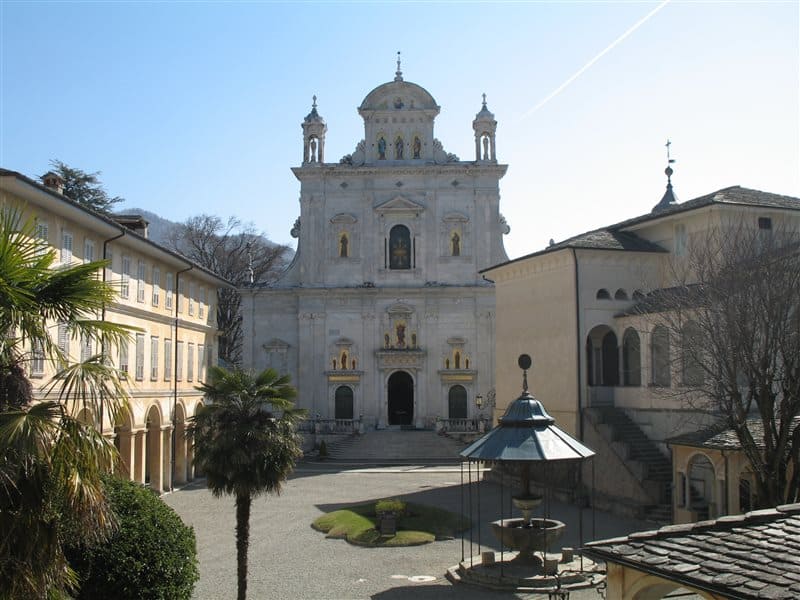
Mole Antonelliana
Revered the people in the area as the symbol of Turin, Mole Antonelliana is a unique aluminum spire that was meant to be a synagogue when its construction commenced in 1862. However, it was never used for worship and today it is known for housing the Museo Nazionale del Cinema and offers some dazzling views from its 85 meters observation deck. The spire also appears on the two-cent coin of Italy and inspired the design of the 2006 Winter Olympics emblem, the 2006 World Fencing Championship logo, and the 2005 World Bocce Championship logo. It is considered one of the most brilliant works of architecture ever built.
Caserta Royal Palace
The Royal Palace of Caserta used to the home of the former royal family in Caserta. Of all the famous landmarks in Italy, it is probably one of the most underrated ancient buildings. It is by far the largest royal palace on the planet in terms of volume with more than 70 million cubic feet. It is modeled from the Palace of Versailles, thus it bears the greatest resemblance to the famous French Landmarks – Versailles.
Romeo and Juliet Balcony in Verona
If you are one of the people fascinated by Shakespeare story of Romeo and Juliet, this balcony in Verona where Juliet was wooed by Romeo is a must-see. The balcony is located in the House of Juliet, the former home of the Cappello family. People from all walks of life linger in the garden, attach letters to the walls and take pictures below the balcony. There is a bronze statue of Juliet, which people can touch or leave a note. You can even send mail to Juliet Home in Verona, and someone will respond to it.
Natural Landmarks in Italy
Mount Vesuvius
Located on the west coast of Italy, Mount Vesuvius is the only active volcano on mainland Europe and is known for being the volcano that destroyed the cities of Herculaneum and Pompeii in 79 AD. Last year (2020) Vesuvius erupted for the first time since 1944. The 2020 eruption was catastrophic and properties were destroyed around Naples, with clouds of black ash raining down on the people. It is considered to be among the most dangerous volcanoes in the world since it is near a huge population settlement in Naples and surrounding.
Dolomites
For skiers, the Dolomites are the most popular destination in Italy. They are also a place for BASE jumping, cycling, hiking, and mountain climbing as well as hang gliding and paragliding in summer and early autumn. The Dolomites are located in the Italian Alps consist of a mountain range and many peaks rising above 3,000 meters. The place is great to visit during summer and winter and is known for being home to some of the most astounding hiking trails in Europe. The closest city to the Dolomites is the small town of Belluno, which is nestled between Ardo and Piave Rivers, surrounded by meadows and undulating hills.
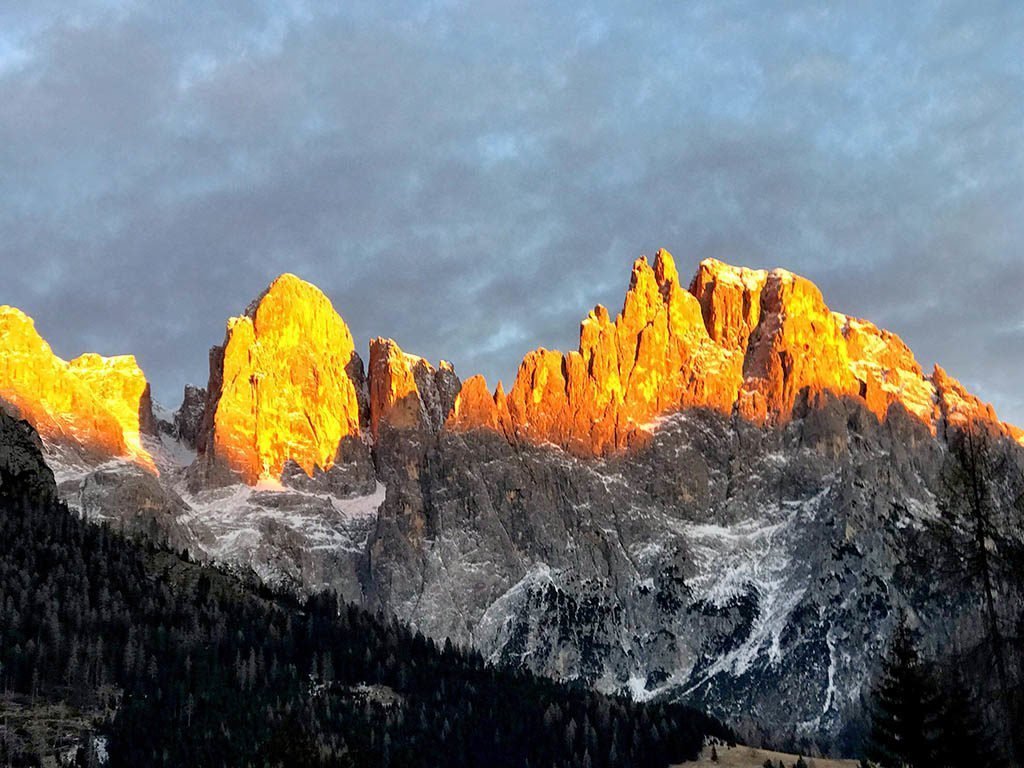
Amalfi Coast
The Amalfi Coast is one of Italy most famous sights for tourists. Every year, more than 5 million visitors flock onto the Amalfi coast to experience first-hand its UNESCO world heritage site landscape and enjoy more than 100 different beaches. It is one of the most expensive Italian landmarks and tends to get overcrowded. This famous coast is also known for its breathtaking towns, with the most accessible one being Sorrento. Sant’Agata is also a popular town on the coast, nestled between two gulfs – the Bay of Salerno and the Bay of Naples with Mount Vesuvius in the background. As with the rest of the region, the Coast experiences the Mediterranean climate, which is mostly warm summers and mild winters.
Mount Etna
Mount Etna is located on the east coast of Sicily and is the largest active volcano in Europe. The last eruption occurred in 2015, and though it was a short eruption, the lava fountain was spewed more than 3,200 feet over the mountain. Despite being an active volcano, people can still visit Mount Etna, with a cable car available to take you up the summit, where you can walk up the designated craters. You can also just walk up the summit and forego the cable car ride. There are also a number of 4×4 tours that take visitors to the volcano and a cave.
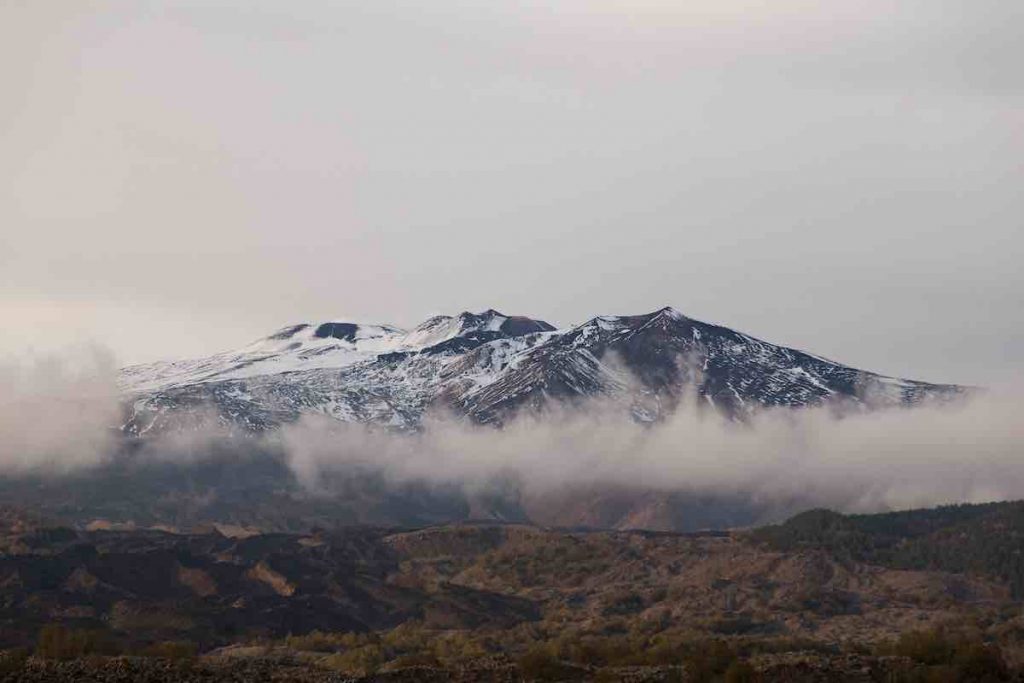
Lake Garda
Located north of Verona, Lake Garda is known for being the most family-oriented and water sports-oriented lake in Italy. Besides, it is also the largest lake in Italy, extending from the steep alpine slopes to the northerly corner of the Po Valley. Its southern coast is lined by beaches with low hills in the background, while its northern shore is fringed by mountains and imposing cliffs. The terrain of the area gives Lake Garda a wide range of attractions, including mountains for climbing and biking with the views of the lake and winds for windsurfing and sailing. Its location also gives it a year-round temperate climate.
Lake Como
Lake Como is located within the Lake District in Italy, the same area as Lake Garda and three other lakes. It is known for being a premium destination for the rich, with shiny Ferraris weaving through the narrow lakeside towns and the neoclassical villas serving as vacationing home for the wealthy. For James Bond enthusiasts, some parts of the movie Casino Royale were filmed in the area and even most lakeside hotels feature a 007 price tag.
Torre Unicredit
Though Italy and Europe in general, are not known for tall buildings, the paradigm is slowly shifting with the cities of Naples and Milan leading the way in terms of skyscrapers. The construction of Torre Unicredit began in 2009 and was completed in 2011, but was opened officially in 2012. At 231 meters, including the spire, the building is the tallest in Italy and one of the tallest buildings in Europe. The skyscraper costs around $3 billion and is owned by UniCredit. The spire is covered with LED can take on different tones depending on the recurrence.
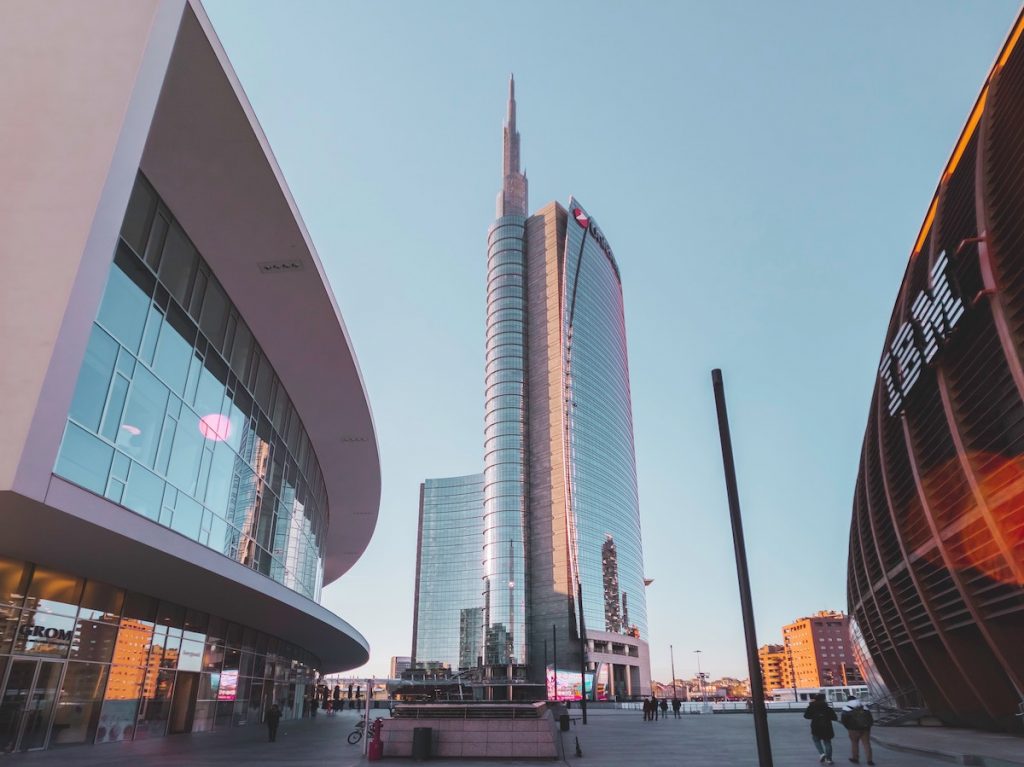
Landmarks in Italy – Pin it for later


